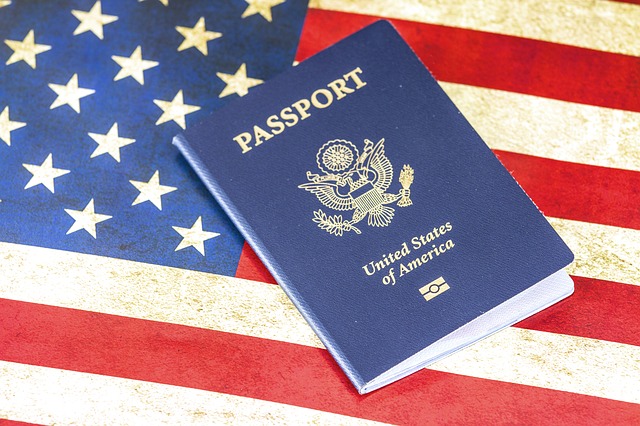Migrate To USA with Family-Based Green Card
Let bring our focus to the family-based green card today. Every day, thousands of people enter the United States from other countries.
Some return the US after being absent while some come to visit relatives, on vacation, to work, or permanently move to the U.S.
For whatever reason, every person entering the U.S. must have the necessary documents to prove that they have legal rights to enter the country. Among these necessary documents is the green card.
Green Card
The green card is the documentation that establishes that the immigrant was granted permanent residence in the US. Meanwhile, the term “green card” comes from previous editions of the card whose colour was light green.
Current “green cards” are pink or light blue. The person who was issued the green card is called a lawful permanent resident.
The card allows a person to live and work in the US without any time restrictions. There are many ways in which a person can obtain permanent resident status.
The two most common ways are through employment or family sponsorship. This guide will cover the family-based green card application process.
Family-Based Green Card
The family-based green card application is submitted based on family ties. A close family tie is a father or mother, spouse, son or daughter, brother or sister to the applicant.
The groups of eligible applicants are categorized based on the type of family relationship (father or mother, spouse, son or daughter, brother or sister) and the type of sponsor (US citizen or permanent resident).
Generally, applicants with higher priority have a shorter wait time for the green card while applicants with lower priority have a long wait time.
This lead to the preference categories of the family-based green card.
Preference Categories of the Family-Based Green Card
In most family-based green card categories, the number of green cards that can be issued each year is limited. An exception to this limit is applications by direct relatives of US citizens.
This means that each year, green cards can be issued to an unlimited number of direct relatives of US citizens.
Direct Relatives
The category of “direct relative” is very convenient because they do not have to wait until a visa number is available before they can apply for the green card.
However, family members who do not qualify as immediate relatives must wait years before qualifying to apply for a green card.
To qualify as an immediate relative, two conditions must be met.
- The sponsor must be a US citizen. There is no such thing as a direct relative of a lawful permanent resident.
- The applicant must be related to the sponsoring citizen as a parent, spouse, or unmarried child under 21 years of age.
Non Direct Relatives
All family members who do not qualify as direct relatives should expect a limited number of Green Cards.
Each year, a new number of green card numbers are available. In some situations, any numbers leftover from the previous year can be “carried over” and added to the New Year’s numbers.
Although, the US Congress can also enact new laws that change the total number of green cards available each year or how the amounts are distributed.
In general, the wait times for the family-based green card can vary greatly, from 2 years to more than 10 years, depending on the preference category of the application.
The Family-Based Green Card Application Process
The family-based green card process consists of two steps;
- A preliminary immigrant visa petition filed by the U.S. citizen or permanent resident sponsor
- A green card application filed by the foreign relative.
The immigrant visa application is filed using Form I-130. This form is used to demonstrate the close relationship between the US sponsor and the foreign national requesting it.
If the sponsor currently lives in the US, the petition is filed with the United States Citizenship and Immigration Services (USCIS). If the sponsor resides outside the US, then it should be filled with the nearest US Consulate.
Once the USCIS has determined that a suitable family relationship exists, the foreign relative will be responsible for submitting the green card application.
The method of submitting the green card application will also depend on whether the applicant currently lives in the US or a foreign country.
Priority Date
The day the immigrant visa petition for a relative is filed is the “priority date” of the application. The priority date establishes the applicant’s place in line for the green card.
This date is similar to pulling out a number at a store and waiting for that number to be called. Before their number is called, the applicant must wait for all the people who arrived earlier to be served first.
When the green card applicant receives the priority date, he/she must wait for all previous applications to be processed first.
The Green Card Deadline
Every month, the Department of State (DOS) publishes a Visa Availability Report called the “Visa Bulletin.” This bulletin includes deadlines for family-based and employment-based green card applications.
If an applicant’s priority date is the same as or earlier than the deadline for his/her application category, then, the applicant is eligible to apply for the green card.
NOTE: When a green card expires, the legal status of the permanent resident is not removed. Legal permanent residents have the freedom to live and work in the US with no time limit.
Shortly before the expiration of the green card, the lawful permanent resident must apply to renew the green card or take steps to obtain U.S. citizenship.
Cost of Family-Based Green Card
The cost of the family-based green card depends on where the application is filed (the US or outside the US). The fees currently range from $ 1000 to $ 1500 and only includes the filing fee. The cost of medical exams, photographs, visa interviews and others are not included.
Conclusion
In summary, the family-based green card favours direct relatives more than any other categories. The direct relative is open to an unlimited number of green cards and they don’t have to wait long before obtaining the green card,
Anyway, I hope you learnt a lot about the family-based green card today. Ensure that you share this piece with your colleagues online.








